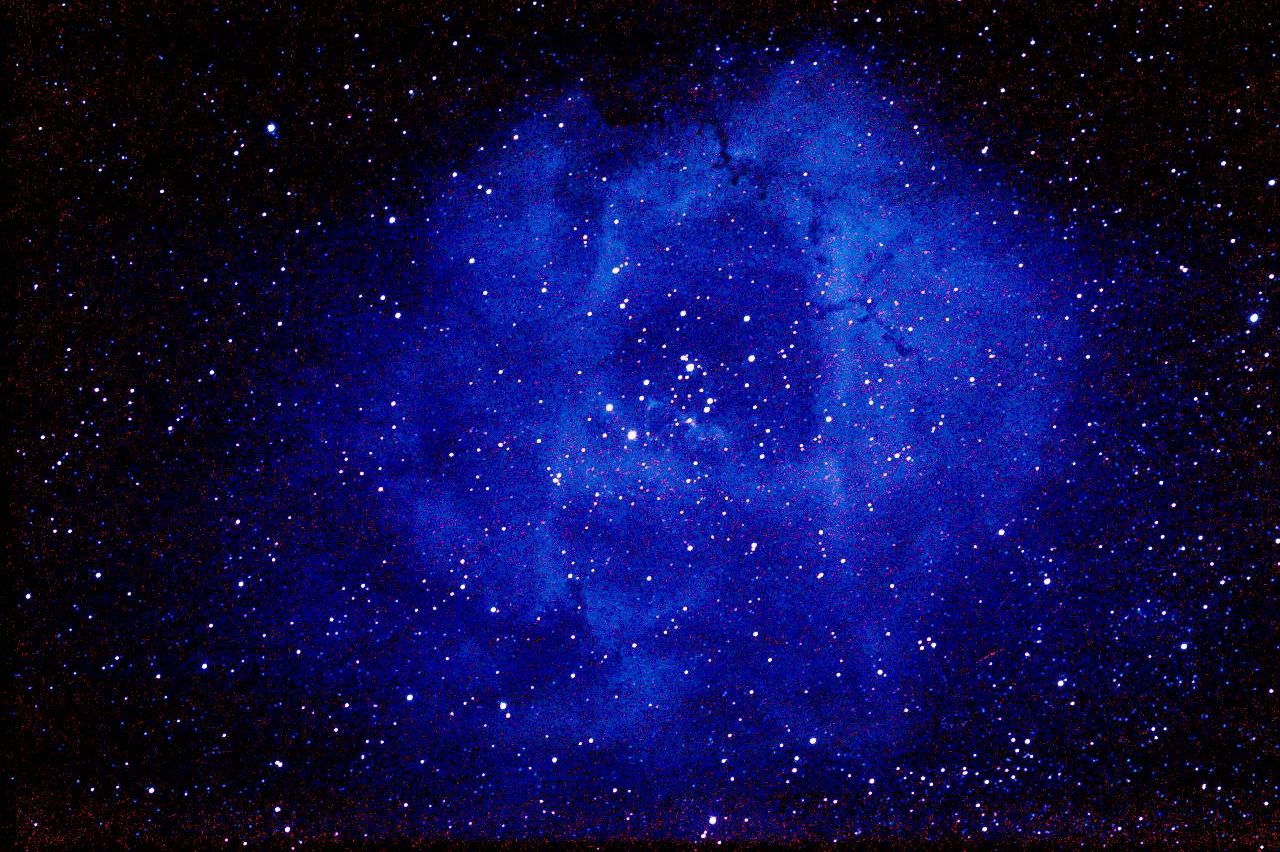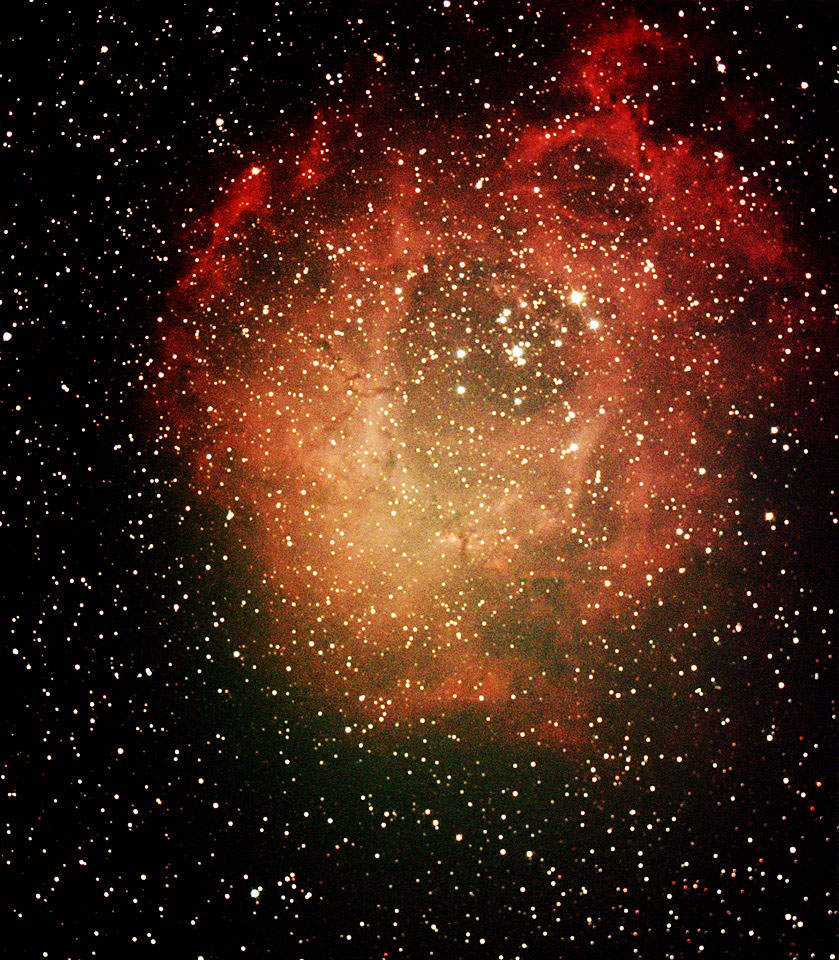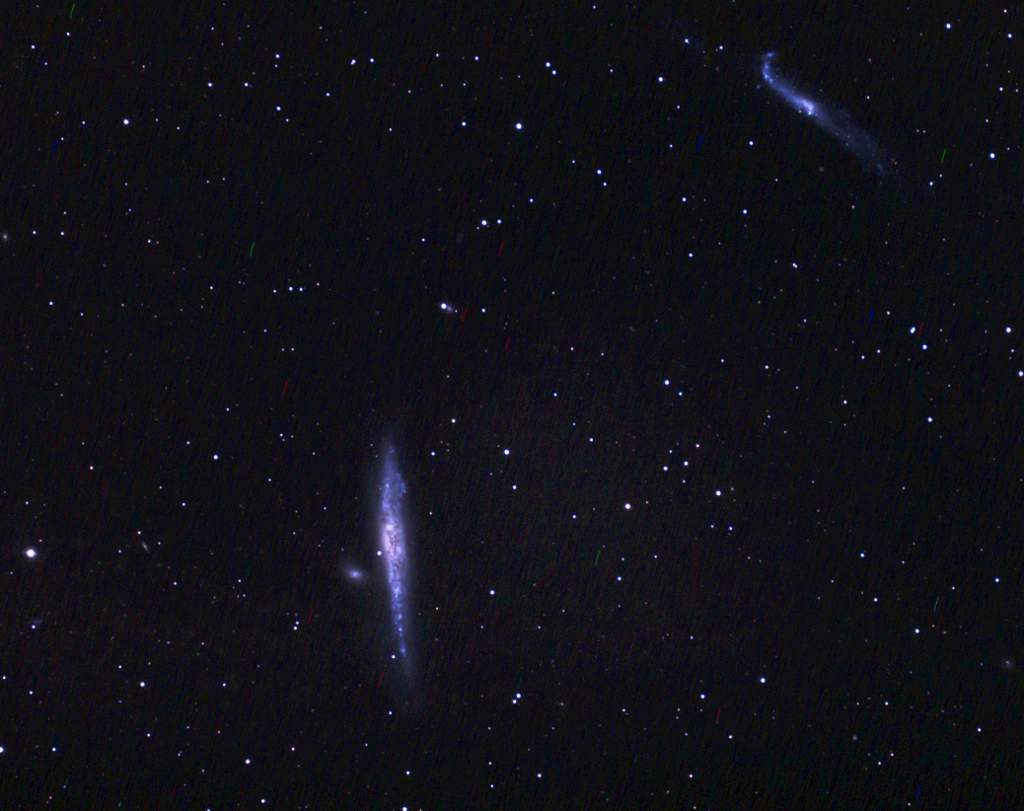 |
The Rosette
Nebula taken in ultraviolet.
Photo Credit: J D Maddy |
 |
The Rosette
Nebula taken in visual wavelengths from Phoenix, AZ
Photo Credit: Jan Weaver |
 |
IC 443, also
known as the Jellyfish Nebula. This was taken with a narrow band hydrogen
alpha filter.
Photo Credit: J D Maddy |
 |
A close look
at the core of M31. M32 is to the left of the photo.
Photo Credit: Dick Haugen |
 |
The Hockey
Stick Galaxy oversees the Whale Galaxy to the lower left.
Photo Credit: J D Maddy |
 |
A small thin
galaxy NGC 4565 is an edge on galaxy with a thin dark dust lane bisecting
the view.
Photo Credit: J D Maddy |
 |
This star
exploded a thousand years ago. It could be seen in the day time for some
time. It is now known as the Crab Nebula. M1.
Photo Credit: Dick Haugen
|
 |
It seems every
look at M42, the Orion Nebula is different. This shows a nice contrast in
the gaseous regions coming out of the core.
Photo Credit: Dick Haugen
|
 |
Colliding
galaxies are always exciting. M51 & NGC 5195 never fail to please the eye.
Or, camera. Photo Credit: Dick
Haugen
|
 |
Another
Messier object, M100 shows off its spiral arms with other galaxies nearby.
Photo Credit: Dick Haugen
|
 |
The Moon is
another object that changes every observing session
Photo Credit: Dick Haugen
|
 |
Another
interesting composite using the Moon and a familiar object, the Rosette
Nebula. Both taken with a GPS 11 equipped with the Hyperstar 3.
Photo Credit: JD Maddy |
 |
Comet 81P
Wild, (pronounced vilt) was discovered in 1978 by Paul Wild. The NASA
Stardust Mission collected dust from this comet in January 2004. In 1974 the
comet flew near Jupiter and it changed its orbital period from 43 years to
just 6 years. Taken with Hyperstar 3 & Canon XSI.
Photo Credit: JD Maddy
|
 |
Centaurus A,
also known as NGC5128 is located low on the horizon for Arizona viewers. It
is only visible usually in May and June. Located 11 million light years from
Earth, it is one of our closest radio galaxies. It is also the 5th brightest
visually. Taken with Hyperstar 3 & Canon XSI.
Photo Credit: JD Maddy
|
 |
Comet McNaught
C/2009 K5 has been putting on a show in Camelopardalis (The Giraffe) in May
and June 2010.
Taken with Hyperstar 3 & Canon XSI.
Photo Credit: JD Maddy
|
 |
This bright
galaxy, NGC 2403, somehow missed by Charles Messier, was discovered by William
Herschel in 1788. It is also located in Camelopardalis.
Taken with Hyperstar 3 & Canon XSI.
Photo Credit: JD Maddy
|
 |
Omega Centari
is located below Centaurus A low on the horizon for Arizona viewers. It is
the largest globular cluster that we can see from Earth. It contains several
million stars and can be seen with the naked eye.
Taken with Hyperstar 3 & Canon XSI.
Photo Credit: JD Maddy
|
 |
This picture
was taken from Tucson on June 2nd, but low level clouds prevented a view
much better than the above picture from Clarkdale. Taken with Hyperstar 3 & Canon XSI.
Photo Credit: JD Maddy
|
 |
The Heart of
the Milky is coming back as summer approaches, but this photo had to be
taken at 3AM! M20 is on the right and M8 is on the left. 22.5 minutes of
exposure with the Hyperstar 3 and Canon 450D (XSI) Photo Credit:
Acquisition-JD Maddy, Processing-Gerald Madero.
|
 |
Another 3AM
photo of Comet C/2009 McNaught R1 in Pegasus.
Hyperstar 3 and Canon 450D (XSI)
Photo Credit: JD Maddy
|
 |
McNaught R1 is
brightening and may reach naked eye magnitude in June 2010. It is heading
for Cassiopeia and may go near Mirfak.
Hyperstar 3 and Canon 450D (XSI)
Photo Credit: JD Maddy
|
 |
McNaught R1 is
brightening and this June 1st photo shows it is indeed brightening. A near
full Moon nearby doesn't seem to spoil the view. Hyperstar 3 and Canon 450D (XSI)
Photo Credit: JD Maddy
|
 |
McNaught R1 is
still brightening and this June 12th photo shows its tail structure. Hyperstar 3 and Canon 450D (XSI)
Photo Credit: Acquisition: JD Maddy.
Processing: Jerry Madero
|
 |
You just can't
get too much comet! |
 |
Wide field
photo using a Pentax IST *D with a 50mm lens. Messier object M34 can be seen
to the left of the Comet. Photo Credit: JD Maddy
|